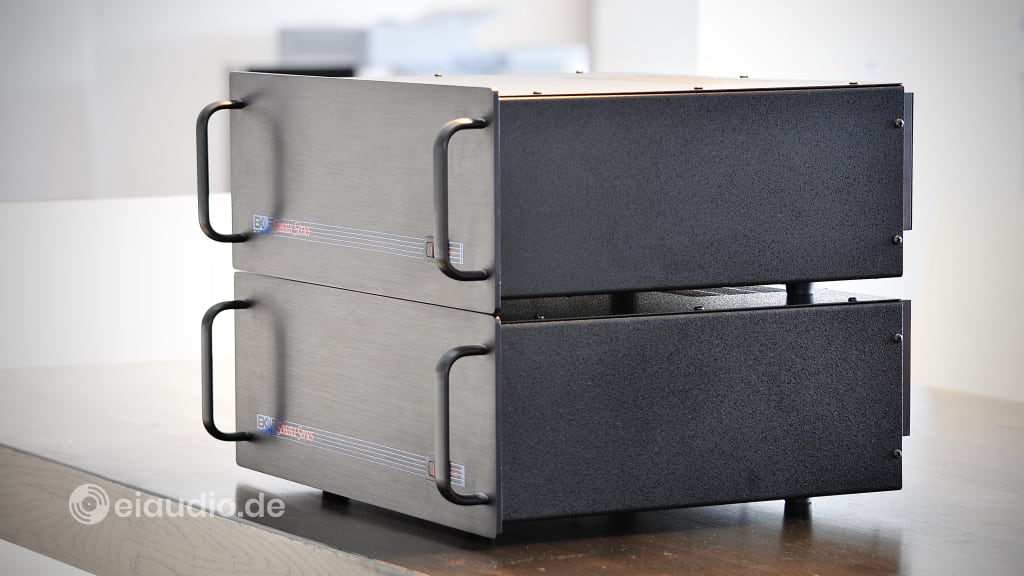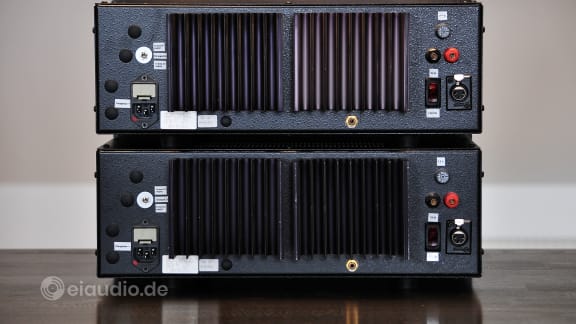B&K Sonata M-200
Published: 31/08/2020
Manufacturing date: 1987
Author: Karsten Hein
Category: Gear & Review
Tag(s): Power Amplifiers
Do you have a bucket list? I have sometimes heard and read of people who write up a personal list of experiences that they hope to have during their lifetime. I suppose, bucket lists include places to travel to and experiences to have, and—until a few days ago—I was not aware that I even had items to put on such a list. But, when I dropped by Luigi’s new apartment to listen to his current HiFi setup and he suggested that I give his B&K Sonata mono block amplifiers a try, I suddenly had a great sensation that an important item was being crossed off my list.
Ever since I first listened to an ST-140 stereo amplifier, I have been a fan of the B&K sound. Simple in their design, these relatively inexpensive amplifiers offer great musicality while being very articulate in their presentation. There is nothing careless or sloppy about their approach to music. And, if the 105 watts RMS per channel amplifier can drive even difficult speakers with ease, just imagine what the 200 watts RMS per channel M-200 mono block amplifiers can do. After all, there is something humbling in a dedicated 19.5 kg amplifier designed to power a single speaker.
Luckily, my car was not parked too far away that evening, so that carrying the equipment to it proved to be an easy enough task. Getting them up the stairs on my own later that night was another story, of course. While the amps have handles up front, the sharp cooling fins extend out the back, causing ugly marks on tables and racks. It is therefore much wiser to ignore the handles and grab the amps by the body to raise them straight up. To be honest, I actually prefer this amp design, as it supports passive cooling when the units are mounted in a rack. Since both HiFi and professional racks are usually open towards the back, having the fins in this position facilitates convection cooling.
In our living room setup, the two B&K M-200 mono blocks were to replace the ST-140 stereo amplifier by the same manufacturer and to drive our Martin Logan SL3 electrostatic speakers. This is not an easy mission at all, because of the Martin Logan’s hybrid design, featuring a conventional woofer that is matched with a Mylar foil electrostatic panel. The difficulty is the low impedance of the panel—of below 2 ohms at 20,000 Hz—but also handling woofer reactance with the panel in the signal path. The SL3s therefore need a powerful amp that will perform into low ohms and offers enough damping to steady the woofer. 105 watts are barely enough for this task, although the ST-140 does have massive reserves and with its huge caps and power supply is relatively unimpressed with the Martin Logan’s impedance curve.
As usual, I gave the ST-140 a good listen first, playing Jazz, Folk, and Gospel that I know well. The Martin Logans sounded large, relatively slow, and relaxed. As a two way system, with a low crossover frequency towards the bass, the sound is generally homogenous and smooth. The ST-140 in combination with the SL3’s closed cabinet woofer produces a full bottom end but does lack some punch in the representation of kick drums. The highs are pleasant but not too crisp. This may have to do with the felt pads that we use as spike coasters to reign in the sound for a more musical and less technical performance.
Changing over to the M-200, I first noticed improved stereo imaging. The sound was still large, but now it was more articulate and slightly more spacious. Not in the sense of wider, but here was simply more room around the instruments. The SL3s now appeared more naturally agile and more forward directed. When listening to Springsteen’s ‘London Calling’ concert, for instance, ‘Youngstown’ had that same immediacy to it that I remember so well from the live concert. Since I already know this DVD well, the ability to evoke such memories at the blink of an eye really says a lot about the quality of the amplifiers. With the M-200 mono blocks, the music found it easier to loosen itself from the speakers.
Bass performance was less boomy and more refined with slightly more punch on the kick drums. While this was still not the SL3’s strong point, I now understand that larger amps will help in blending the bass in with the panel frequencies. And there is another difference that I noticed while watching TV later that night. Namely, that cinematic effects sometimes seemed to be unnecessarily emphatic, as if the engineers had mastered the sound track for equipment that was less revealing.
I hope I will be afforded the luxury of being able to listen to these amps for a few days, before returning them to their rightful owner. Well done, B&K. The Sonatas are accurate and musical amps that manage difficult speakers with ease and have enough power to convince even the otherwise relaxed Martin Logans to step it up a notch.
Specifications
- Number of channels: 1
- Power output (8 ohms): 200 watts RMS
- Power output (4 ohms): 400 watts RMS
- Total harmonic distortion: 0.09 %
- Signal to noise ratio: 95 dB
- Damping factor (50Hz): 600
- Frequency response: 1 Hz - 100,000 Hz
- Slew rate: 25 V / uSec
- Power consumption: 800 watts max / 65 watts (idle)
- Dimensions: (w)43.18 cm, (h)14.68 cm, (d)38.70 cm
- Weight: 19.5 kg
- Country of manufacture: U.S.A.
- Year(s): 1987 - 1990





